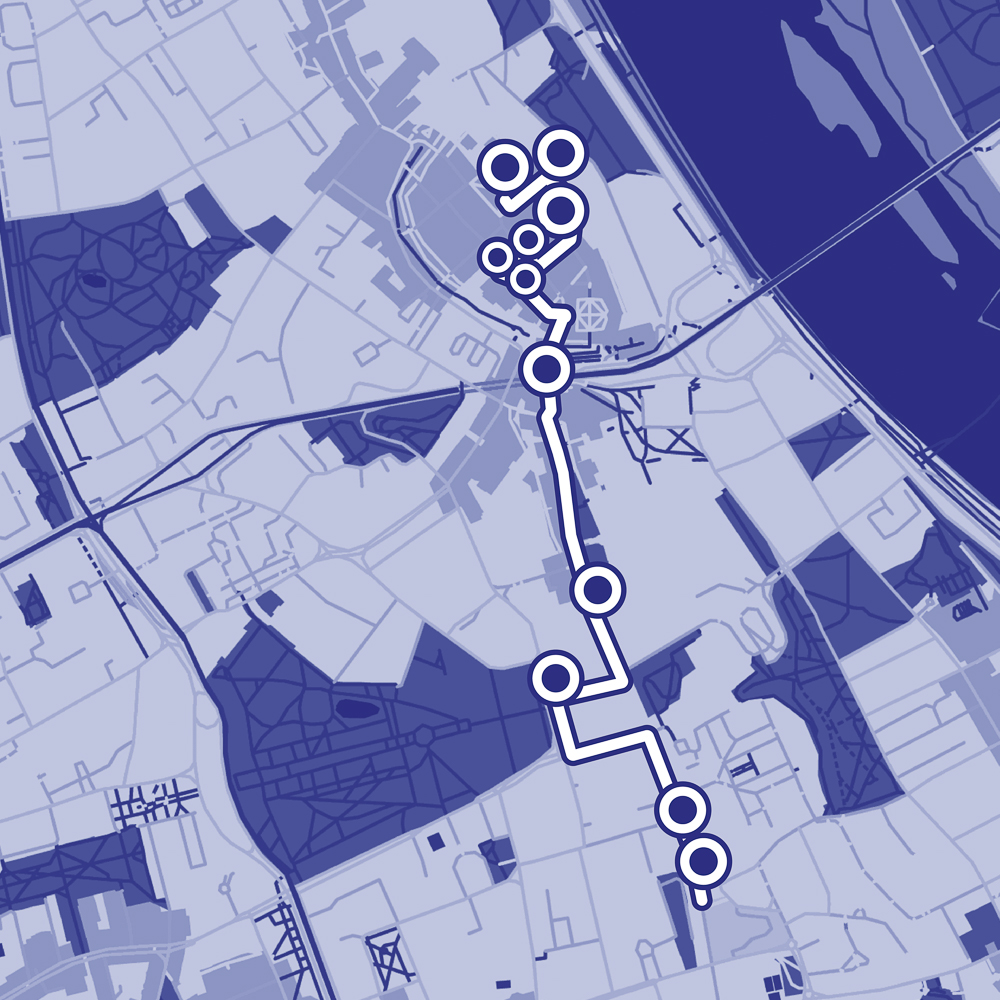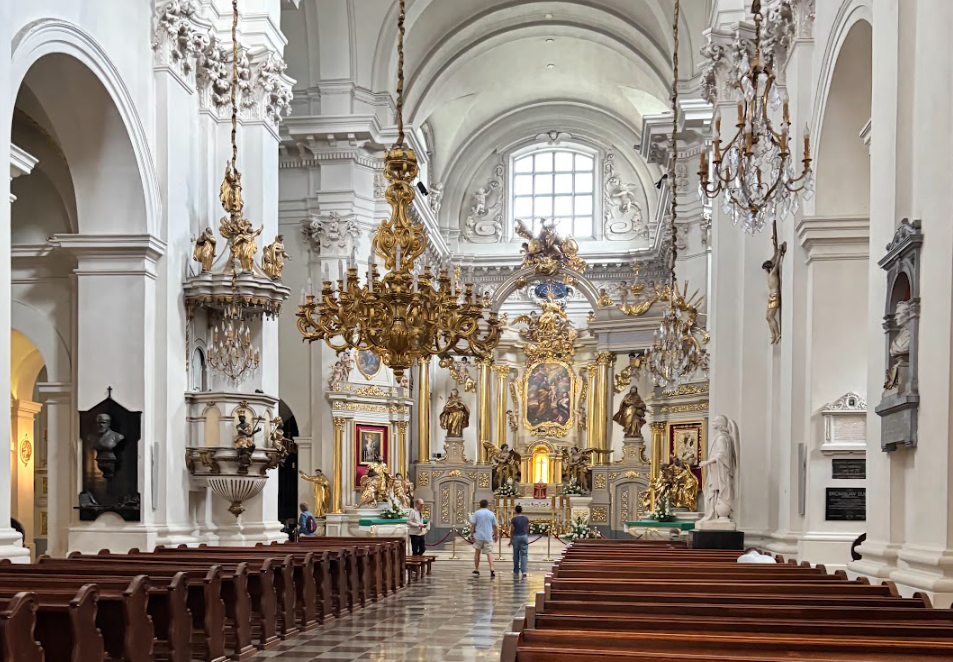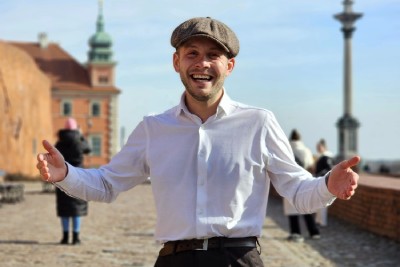
Join me on a captivating journey through Warsaw’s most iconic landmarks.
Stroll along Krakowskie Przedmieście, a historic street lined with majestic palaces and churches, once the heart of the Royal Route. Explore the charming Old Town, with its colorful merchant houses and vibrant atmosphere. This tour is the perfect introduction to Warsaw, offering a comprehensive overview of the city’s rich history and hidden gems in a fun and engaging way.
Highlights
Palaces and churches of Royal Route (Krakowskie Przedmieście), Plac Piłsudskiego square, Castle Square, Old Town Market Square – all viewed from outside.
Language
English
Tour Duration
Up to 2,5 hours
Price
750 PLN
Old Town Walking Tour in Warsaw
Join me on a fascinating journey through Warsaw’s most iconic landmarks. Take a stroll along Krakowskie Przedmieście — a historic street lined with majestic palaces and churches, once the heart of the Royal Route. Discover the charm of the Old Town, with its colorful merchant houses and lively atmosphere. This tour is the perfect introduction to exploring Warsaw, offering a comprehensive overview of the city’s rich history and hidden gems in a fun and engaging way.
- Old Town Walking Tour in Warsaw
- Warsaw in One Day — Landmarks Along the Royal Route
- Krakowskie Przedmieście — The Backbone of Old Warsaw
- Old Town Attractions — Monuments, Churches, and Palaces
- Warsaw in One Day — Castle Square and the Royal Castle
- The Old Town — Cobblestone Streets and the Market Square
- New Town and the Barbican
- Join a Guided Tour of Warsaw
Highlights: The palaces and churches of Krakowskie Przedmieście, Piłsudski Square, Castle Square, Old Town Market Square — all viewed from the outside.
Tour duration: up to 2.5 hours.
Warsaw in One Day — Landmarks Along the Royal Route
The Royal Route connects Wilanów Palace with the Royal Castle. It includes Ujazdowskie Avenue, Nowy Świat Street, and Krakowskie Przedmieście. Along this route you’ll find the most important attractions in Warsaw — the summer royal residence, royal gardens in Łazienki Park, bishops’ palaces, monuments to prominent Poles, historic churches and townhouses, government institutions, and finally the seat of Polish monarchs: the Royal Castle and Old Town Market Square, which served as the heart of the city. The Royal Route is also the main sightseeing route in Warsaw — a favorite path for guided tours in Warsaw.
Today we’ll focus on the Old Town attractions located along Krakowskie Przedmieście. I’ll also talk about the Royal Castle and the Old Town Market Square. A guided tour of Warsaw is the best way to learn about the city’s history and discover everything there is to know about its top attractions.

Krakowskie Przedmieście — The Backbone of Old Warsaw
Krakowskie Przedmieście is a section of the Royal Route stretching from the Nicolaus Copernicus Monument to the Royal Castle. For centuries it has been full of life, and every building and monument here is a witness to the history that shaped not only Warsaw but the entire country. Imagine 17th-century Warsaw — a muddy road where noblemen’s carriages, merchants’ wagons, and diplomats’ coaches moved slowly.
Krakowskie Przedmieście was the beating heart of the royal city. This was the center of political, social, and religious life in the capital. Kings would ride through this street to reach the Castle — hence the name “Royal Route.” Grand residences, palaces, and churches rose along the way. But it’s worth remembering that much of it was destroyed and later rebuilt from ruins — sometimes even using bricks brought from other cities in Poland.
Old Town Attractions — Monuments, Churches, and Palaces
We begin our walk at a meeting point familiar to students, tourists, and Varsovians alike — the Nicolaus Copernicus Monument. It stands in front of the neoclassical Staszic Palace, now home to the Polish Academy of Sciences. Here, the great astronomer, his gaze turned toward the sky, reminds us of the power of human intellect and the courage to challenge accepted truths.
- Holy Cross Church
- University of Warsaw
- Visitationist Church — Silence in the Heart of the City
- Piłsudski Square — A Tribute to Heroes
- Presidential Palace — The Seat of Power
- St. Anne’s Church — A View Over Krakowskie Przedmieście and the Vistula
Holy Cross Church
Just a few steps away, across the street, rises the majestic Holy Cross Church. Its Baroque façade catches the eye, but its greatest treasure is the heart of Frédéric Chopin, sealed inside a pillar of the left nave — a place where Warsaw still listens to the quiet echoes of his music.
University of Warsaw
A bit further on the right, we see the Neo-Baroque main gate of the University of Warsaw, and just behind it, the Czetwertyński-Uruski Palace. These walls remember revolutionaries, poets, and prominent scholars — this was a place where ideas that shaped Poland were born. Nearby, we find the elegant neoclassical façade of the Tyszkiewicz-Potocki Palace, now home to the University of Warsaw Museum.
Visitationist Church — Silence in the Heart of the City
A bit farther, hidden in the shade of trees, stands the Baroque Visitationist Church. Few people know that the young Frédéric Chopin played the organ here during Mass. Although Krakowskie Przedmieście hums with voices and tourist chatter, inside the church, time seems to stand still.
Piłsudski Square — A Tribute to Heroes
Taking a brief detour from Krakowskie Przedmieście, we arrive at Piłsudski Square — the patriotic heart of Warsaw. At its center stands the Tomb of the Unknown Soldier — its eternal flame and honor guard commemorate those who gave their lives for Poland’s freedom. This is where the country’s most important national ceremonies take place. The columns surrounding the Tomb are the remains of the Saxon Palace, destroyed by the Germans at the end of 1944. Its reconstruction is currently underway.
Returning to the Royal Route, we pass the elegant Hotel Bristol — a Secessionist gem and a proud remnant of Warsaw’s interwar grandeur.
Presidential Palace — The Seat of Power
A few minutes’ walk brings us to the most representative residence on this street — the Presidential Palace. Formerly the Radziwiłł Palace, also known as the Governor’s Palace, it has hosted crowned heads, tsars, and even Napoleon. It was built in the mid-17th century at the behest of Grand Crown Hetman Stanisław Koniecpolski. Today it is where Poland’s most important decisions are made. On the courtyard stands Prince Józef Poniatowski on horseback — a symbol of courage and honor. This bronze statue was cast in 1829 by the Danish master Bertel Thorvaldsen and modeled after the statue of Emperor Marcus Aurelius on Rome’s Capitoline Hill. Opposite the Presidential Palace stands the Potocki Palace — now the Ministry of Culture — once a lively salon of Warsaw’s elite.
Continuing along Krakowskie Przedmieście, we arrive at the Adam Mickiewicz Monument — not only a symbol of Polish literature but also of resistance. During times of partition and occupation, people left flowers and candles here as a sign of their faith in a free Poland.
St. Anne’s Church — A View Over Krakowskie Przedmieście and the Vistula
Just before Castle Square, on the right, stands St. Anne’s Church — one of the most important and beautiful churches in Warsaw. Its classicist façade and richly decorated interior hold a history reaching back to the fifteenth century. This is where academic Masses, processions, and national holidays were celebrated. Climbing the church tower is worthwhile — the observation deck offers breathtaking views of Castle Square, the Royal Castle, the rooftops of the Old Town, the Vistula River, and Warsaw’s bridges.

Warsaw in One Day — Castle Square and the Royal Castle
Castle Square is more than just the space in front of the Castle — it’s the living heart of Warsaw, where people have gathered for centuries during festivals and daily strolls. On sunny days, the square bustles with tourists, street performers, and locals resting on the steps of the Sigismund III Vasa Column. You’ll hear languages from all over the world, smell coffee from nearby cafés, and feel the cobblestones that remember royal processions and uprisings. In the evening, the square comes alive even more — lit by lanterns and Castle lights, it becomes a place where history meets the pulse of modern city life.
And finally, we stand before the Royal Castle — Warsaw’s pride. Its red walls tower over Castle Square, and the Sigismund III Column — honoring the king who moved the capital from Kraków to Warsaw — marks the city’s symbolic center. This is where the May 3rd Constitution was adopted. This is where kings would emerge to meet the people. Although the Castle was almost completely destroyed during World War II, it was resurrected from the ruins thanks to the persistence and spirit of Warsaw’s residents.
The Old Town — Cobblestone Streets and the Market Square
Beyond the Castle, we enter the narrow streets of the Old Town and reach the Old Town Market Square — the beating heart of historic Warsaw. We pass the neo-Gothic St. John’s Archcathedral, home to priceless relics and crypts where the last Polish king, princes, and bishops are buried. The colorful townhouses hold stories of merchants, artisans, townspeople, and the hustle of marketplaces that echoed here since the Middle Ages. Today, cafés, restaurants, and galleries bring new life to the square — but the spirit of old Warsaw still lingers on its cobblestone streets. The air often carries melodies from a barrel organ and the voice of the Organ Grinder — dressed in costume and singing songs that evoke the charm of the old capital for both locals and visitors.

New Town and the Barbican
From the Old Town, we follow Podwale and Nowomiejska Streets to the New Town district. On the left is Freta Street and the townhouse where Maria Skłodowska-Curie was born. On the right, we see the Barbican — the old gate that once protected the city’s northern entrance. It still marks the border between the Old and New Towns. The walls along Podwale Street are part of the city’s former fortifications — reconstructed after the war but still a reminder of medieval Warsaw. Walking down Nowomiejska Street, we return to the Old Town Market Square. For many visitors, this stroll is a chance to hear street musicians, buy paintings from local artists, or simply sit on the city wall and feel the atmosphere of a city that remembers kings, uprisings, and rebuilding from war-torn ruins.
Join a Guided Tour of Warsaw
This is Krakowskie Przedmieście — an avenue like a living book, telling stories of kings and poets, heroes and everyday people. Here, you can smell history and touch walls that have outlived generations. It’s also important to be aware of the wartime destruction and the fact that these townhouses, churches, and palaces were rebuilt — or even reconstructed from ruins — so that we can admire them today.
